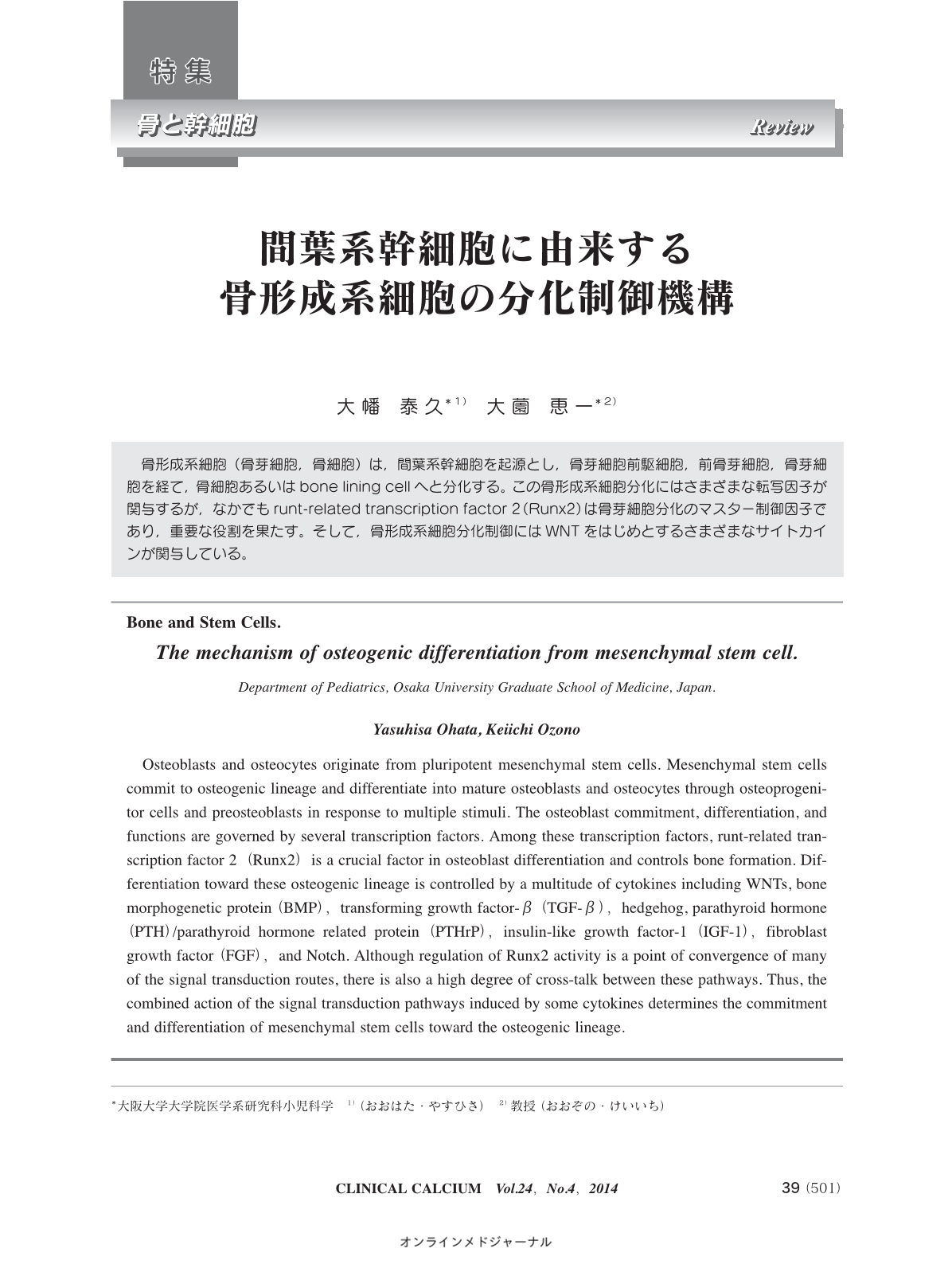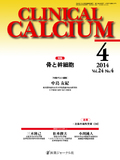Japanese
English
- 有料閲覧
- Abstract 文献概要
- 1ページ目 Look Inside
- 参考文献 Reference
骨形成系細胞(骨芽細胞,骨細胞)は,間葉系幹細胞を起源とし,骨芽細胞前駆細胞,前骨芽細胞,骨芽細胞を経て,骨細胞あるいはbone lining cellへと分化する。この骨形成系細胞分化にはさまざまな転写因子が関与するが,なかでもrunt-related transcription factor 2(Runx2)は骨芽細胞分化のマスター制御因子であり,重要な役割を果たす。そして,骨形成系細胞分化制御にはWNTをはじめとするさまざまなサイトカインが関与している。
Osteoblasts and osteocytes originate from pluripotent mesenchymal stem cells. Mesenchymal stem cells commit to osteogenic lineage and differentiate into mature osteoblasts and osteocytes through osteoprogenitor cells and preosteoblasts in response to multiple stimuli. The osteoblast commitment, differentiation, and functions are governed by several transcription factors. Among these transcription factors, runt-related transcription factor 2(Runx2)is a crucial factor in osteoblast differentiation and controls bone formation. Differentiation toward these osteogenic lineage is controlled by a multitude of cytokines including WNTs, bone morphogenetic protein(BMP),transforming growth factor-β(TGF-β),hedgehog, parathyroid hormone(PTH)/parathyroid hormone related protein(PTHrP),insulin-like growth factor-1(IGF-1),fibroblast growth factor(FGF),and Notch. Although regulation of Runx2 activity is a point of convergence of many of the signal transduction routes, there is also a high degree of cross-talk between these pathways. Thus, the combined action of the signal transduction pathways induced by some cytokines determines the commitment and differentiation of mesenchymal stem cells toward the osteogenic lineage.



